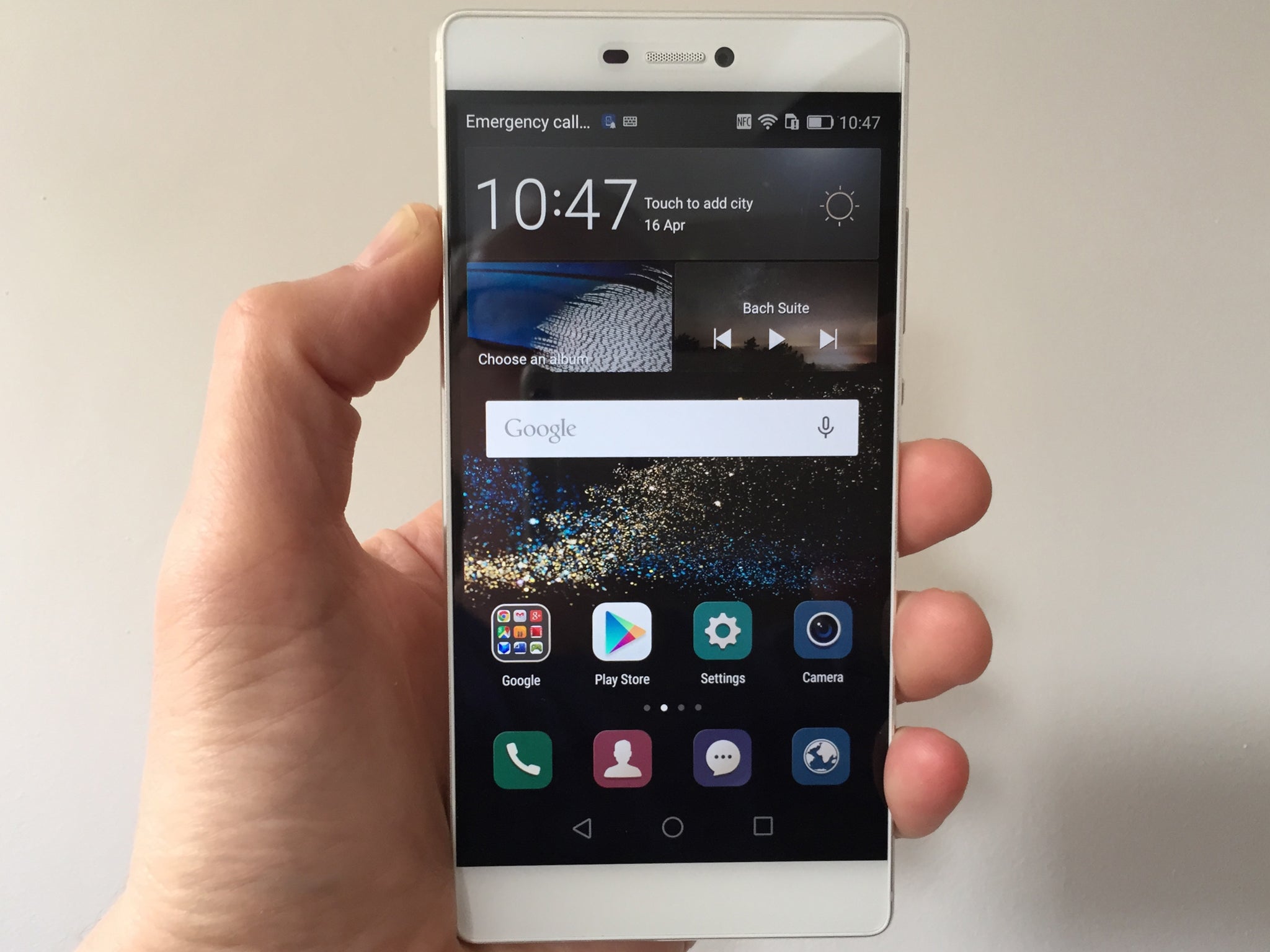Huawei P8 review: best phones nobody's seen from the biggest company nobody's heard
The P8 could be the phone that brings Huawei to the big time

Your support helps us to tell the story
From reproductive rights to climate change to Big Tech, The Independent is on the ground when the story is developing. Whether it's investigating the financials of Elon Musk's pro-Trump PAC or producing our latest documentary, 'The A Word', which shines a light on the American women fighting for reproductive rights, we know how important it is to parse out the facts from the messaging.
At such a critical moment in US history, we need reporters on the ground. Your donation allows us to keep sending journalists to speak to both sides of the story.
The Independent is trusted by Americans across the entire political spectrum. And unlike many other quality news outlets, we choose not to lock Americans out of our reporting and analysis with paywalls. We believe quality journalism should be available to everyone, paid for by those who can afford it.
Your support makes all the difference.Huawei is the biggest phone brand you may never have heard of, though that’s beginning to change. Two years ago it launched the Ascend P6 which was super-slim (6.18mm from front to back) and aiming directly at the iPhone market, a phone which some would say the P6 resembled. Huawei’s handsets are priced much more keenly than Apple or Samsung products, however.
Last year’s Ascend P7 was less of a statement but yesterday in London the company revealed its latest flagship, the P8. The word Ascend has been dropped from the name, perhaps indicating the company has reached the summit.
Certainly the phone is a leap forward in design and build quality. It has an all-aluminium one-piece frame, a screen which reaches almost to the edges of the phone’s front. Huawei proudly boasted that a higher proportion (78.3 per cent) of the front of the phone was screen than on rivals like the iPhone 6 and Samsung Galaxy S6.
Like the iPhone and recent Samsung Galaxy phones, the antenna is built into the frame, with telltale rubber stripes that sort conductivity issues. On the Ascend P6, this was badly executed, with the rubber protruding so you felt it scuff against your hand. Here, it’s perfectly flush – just one sign of massively improved build quality. The stripe of rubber runs round the back of the phone as well, and is the one element where Huawei’s design is better than Apple’s, which has thicker lines in a more dominant pattern.
The edges are a touch sharp for my liking, especially since the smooth curves of the iPhone 6 and blunter corners of the Samsung Galaxy S6 have made comfier handsets the norm. Still, overall the design is good.
It’s available in four colours: Mystic Champagne (that’s just cava, right?), Titanium Grey, Carbon Black and Prestige Gold, with the last two boasting higher storage capacity at 64GB against the standard 16GB capacity. All models have a microSD card slot as well.
The wall-to-wall screen looks great, even if its HD resolution is less impressive than the Samsung Galaxy S6’s far higher pixel count. Even so, the screen looks attractive and full of rich, realistic colours and detail.
But Huawei was as much eager to show what the phone does differently from rivals as well as how it looks. It’s a mark, I think, of how difficult it is to really stand out just based on design, unless you have a gimmick like the sloping screen edges of the Samsung Galaxy S6 edge.
So there are features like Voice Wake. If you’ve lost your phone, say a pre-recorded phrase and the phone wakes, plays music and sings “I’m here” so you can locate it. You don’t have to use the cringeworthy “Hi Buddy” trigger-phrase the company suggested, thank goodness.
There’s also Perfect Selfie software. While the soft-focus effect is common to many in-phone editing features, this goes further, though the results can look so doctored that it’s no longer real. Let alone familiar. Still, the 13-megapixel rear camera seems pretty good, managing clarity in low light as well as strong contrast in bright situations. There are other gimmicks such as a light painting mode which essentially lets you shoot a video which combines light effects into a still picture, though the examples given included dazzling fireworks brandished around remarkably brave models. In practice this may only be used with sparklers on Bonfire Night.
As this is an Android handset, Huawei has been able to tailor the software experience, including the decision not to include an app shortcut tray where you can store all your apps. Instead, rather like the iPhone, all the apps are on display or in folders. It’s not a bad idea as such, but always seems like a slightly curious waste of Android’s capabilities.
Huawei is a company that for some time now has felt like it’s been on the brink of the big time. Sales are massive globally and maybe with the P8 the combination of glitzy looks, keen price and quirky extra features, those sales will be as golden as the handset.
Join our commenting forum
Join thought-provoking conversations, follow other Independent readers and see their replies
Comments